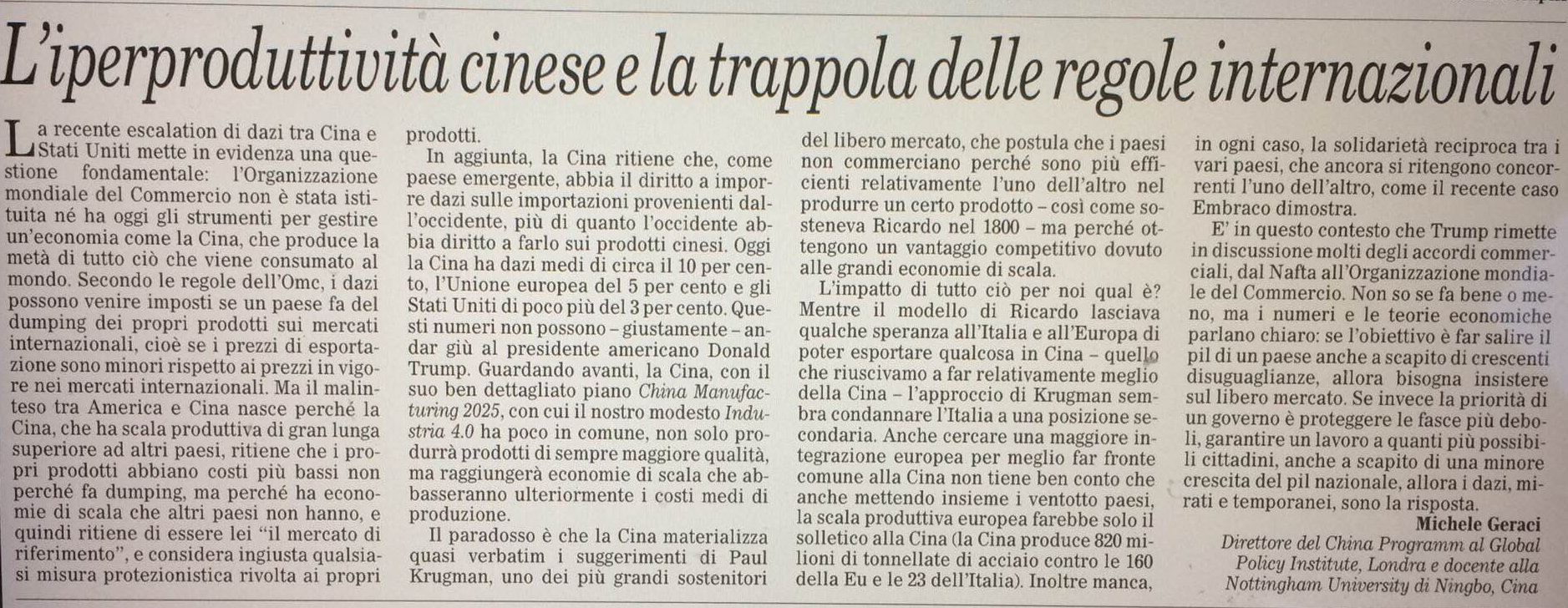
The recent escalation of tariffs between China and the United States highlights a fundamental question: the World Trade Organization has not been established nor does it have the tools to manage an economy like the Chinese one, which produces half of everything that is consumed in the world. According to the rules of the WTO, the duties can be imposed if a country makes the dumping of its products on the international markets and if the export prices are lower than the prices in force in international markets. But the misunderstanding between America and China arises because China, which has a production scale far superior to other countries, believes that its products have lower costs, not because it is dumping, but because it has economies of scale that other countries do not have, and therefore believes that she is “the reference market”, and considers any protectionist measures aimed at its products unjust.
In addition, China believes that, as an emerging country, it has the right to impose duties on imports from the West, more than the West is entitled to do so on Chinese products. Today China has average tariffs of about 10 percent, the European Union of 5 percent and the United States of just over 3 percent. These numbers can not, rightly, be accepted by the American president Donald Trump. Looking ahead, China, with its well-designed China Manufacturing 2025 plan, that compared with the Italian Industry 4.0 plan has little in common, it will not only produce ever-higher quality products but will also achieve economies of scale that will further lower average production costs.
The paradox is that China almost materializes verbatim the suggestions of Paul Krugman, one of the biggest supporters of the free market, who postulates that countries do not trade because they are more efficient relative to each other in producing a certain product – as Ricardo claimed in the 1800s – but because they get a competitive advantage due to large economies of scale.
What are the side effects for Italy and Europe?
While Ricardo’s model left some hope for Italy and Europe to be able to export something to China – what we could do in a relatively better way than China – Krugman’s approach seems to condemn Italy to a secondary position. Even looking for greater European integration to better cope with China does not take into account that even putting the twenty-eight countries together, the European production scale would only tickle China (China produces 820 million tons of steel compared to 160 in the EU and 23 of Italy). Moreover, in any case, there is no mutual solidarity between the various countries, which still considered competitors of each other, as the recent Embraco case demonstrates.
It is in this context that Trump challenges many of the trade agreements, from Nafta to the World Trade Organization. I do not know if it is good or not, but the numbers and economic theories are clear: if the goal is to raise the GDP of a country even at the expense of increasing inequality, then we must insist on the free market. If instead, the priority of a government is to protect the weakest groups, to guarantee a job to as many citizens as possible, even at the expense of lower national GDP growth, then the targeted and temporary tariffs are the answer.
Article by Michele Geraci
